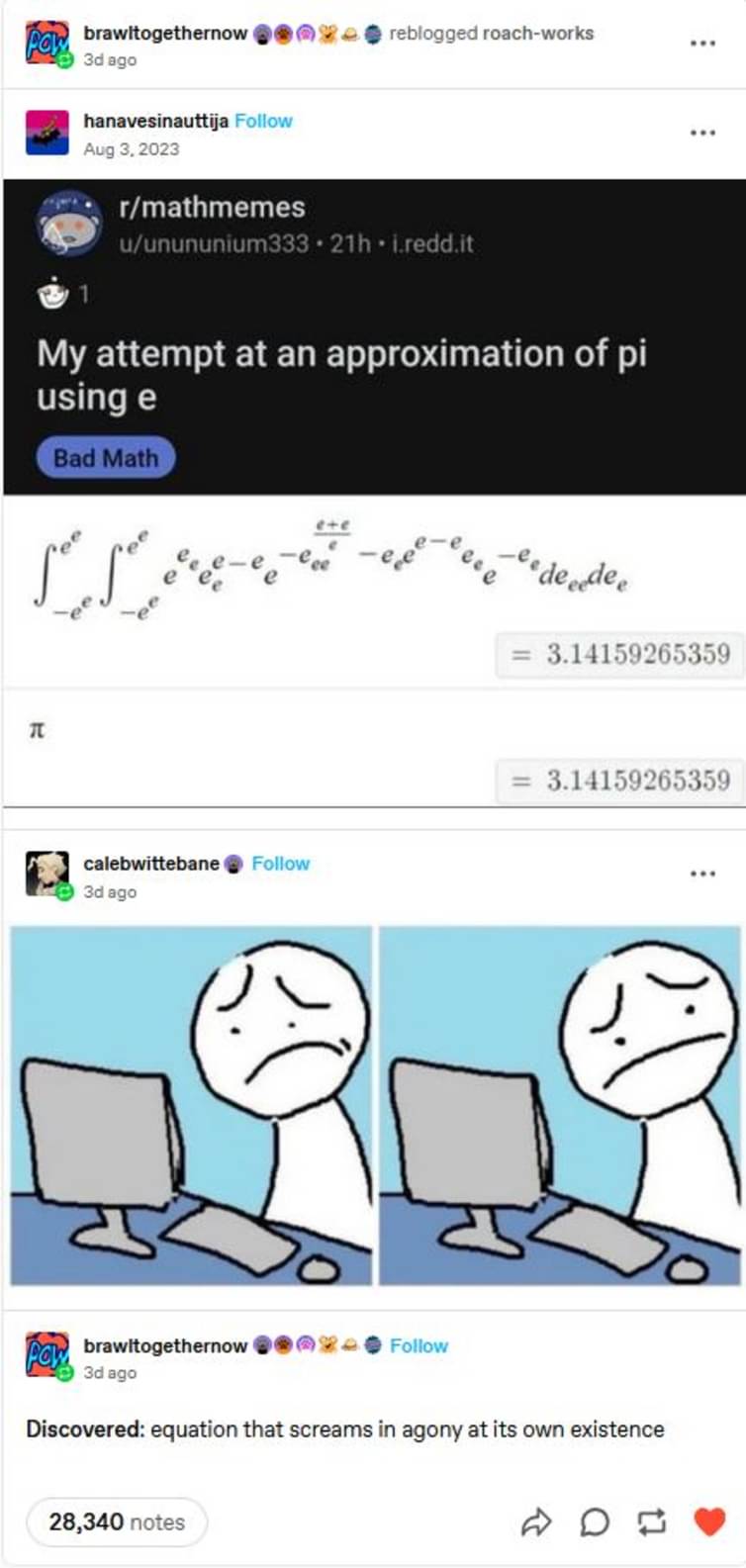this post was submitted on 17 Jul 2024
853 points (98.9% liked)
Science Memes
12399 readers
2310 users here now
Welcome to c/science_memes @ Mander.xyz!
A place for majestic STEMLORD peacocking, as well as memes about the realities of working in a lab.

Rules
- Don't throw mud. Behave like an intellectual and remember the human.
- Keep it rooted (on topic).
- No spam.
- Infographics welcome, get schooled.
This is a science community. We use the Dawkins definition of meme.
Research Committee
Other Mander Communities
Science and Research
Biology and Life Sciences
- [email protected]
- [email protected]
- [email protected]
- [email protected]
- [email protected]
- [email protected]
- [email protected]
- [email protected]
- [email protected]
- [email protected]
- [email protected]
- [email protected]
- [email protected]
- [email protected]
- [email protected]
- [email protected]
- [email protected]
- [email protected]
- [email protected]
- [email protected]
- [email protected]
- [email protected]
- [email protected]
- [email protected]
- !reptiles and [email protected]
Physical Sciences
- [email protected]
- [email protected]
- [email protected]
- [email protected]
- [email protected]
- [email protected]
- [email protected]
- [email protected]
- [email protected]
Humanities and Social Sciences
Practical and Applied Sciences
- !exercise-and [email protected]
- [email protected]
- !self [email protected]
- [email protected]
- [email protected]
- [email protected]
Memes
Miscellaneous
founded 2 years ago
MODERATORS
you are viewing a single comment's thread
view the rest of the comments
view the rest of the comments

Kind of intentionally obtuse since they used eₑ as a variable and eₑₑ as another variable, and used (e-e) as an exponent a few times, which is basically the equivalent of multiplying by 1 in a fancy way. The first and last term also perfectly cancel out.
The same integral written in a saner form is:
integral from -e^e to e^e of (integral from -e^e to e^e of e^-(x^2+y^2)dy)dx
Wait... that's not an approximation at all! That equals exactly pi. If I understand the math correctly, it's effectively a formula for the area of a unit circle.
That should be an approximation. To get exactly pi the range of both integrals should be from minus infinity to infinity like this. It's the integral of the 2D Gaussian, which is fairly known.
The approximation is only around 4.2810^-101 off from pi.
https://www.wolframalpha.com/input?i=integral+from+-a+to+a+of+%28integral+from+-a+to+a+of+e%5E-%28x%5E2%2By%5E2%29dy%29dx
https://www.wolframalpha.com/input?i=%281-erf%28e%5Ee%29%5E2%29pi
And because it always bears repeating;
According to JPL’s Chief Engineer for Mission Operations and Science, Marc Rayman-
Let's go to the largest size there is: the known universe. The radius of the universe is about 46 billion light years. Now let me ask (and answer!) a different question: How many digits of pi would we need to calculate the circumference of a circle with a radius of 46 billion light years to an accuracy equal to the diameter of a hydrogen atom, the simplest atom? It turns out that 37 decimal places (38 digits, including the number 3 to the left of the decimal point) would be quite sufficient.Technically you need another 20 digits if you want to get down to a Planck length. (57 digits in total)
So the number 3 should be close enough for home use. Good to know. Thanks!
As an engineer, I approve this message!
My maths exam asked me to consider pi=5.
"I will... consider it."
You can quote with the “greater than” sign (>). Backticks mark text as source code.
> quote
Ah, you're right. I was thrown off by WolframAlpha saying the integral = π ≈ 3.1416 Both of those should be ≈
(x^2 + y^2)=1 is the equation for a unit circle, so it's definitely related. Just not quite how I thought.
Also the 2D gaussian integral is used to give an insight on why the 1D gaussian integral is sqrt of pi. Here is a video with cool visualization for anyone interested.
“Fix” it with
Lim as eee-> infinity(where eee is some other e-named variable)